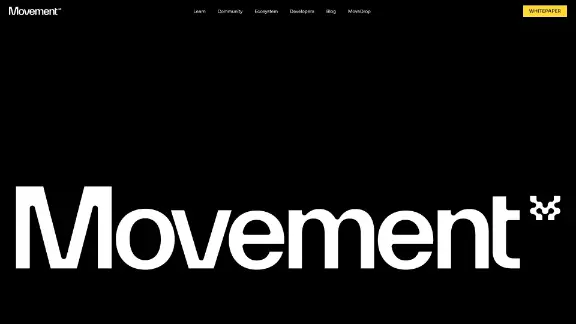Movement (MOVE)
Movement Network is a ecosystem centered around modular, move-based blockchains. It provides a platform for developers to build secure, high-performing, and interoperable blockchain applications. By bridging the gap between the Move programming language and the Ethereum Virtual Machine (EVM) ecosystems, Movement Network offers a unique approach to blockchain development.
The architecture of Movement Network
Movement Network distinguishes itself by being the first Move-EVM Layer 2 (L2) solution for Ethereum. This architecture allows developers to utilize the strengths of both Move and EVM, creating a flexible environment for blockchain applications. The network supports the deployment of high-performance Move Virtual Machine (VM) rollups, which simplify the process for developers to launch scalable applications.

| Ticker | MOVE |
| Category | Smart Contract Platform |
| Website | https://www.movementnetwork.xyz/ |
| @movementfdn | |
| Telegram | movementlabsxyz |
| Contract Addresses | |
|---|---|
| ethereum | 0x30...73 Copied! Copied! |
Development and support
Movement Network is backed by prominent investors and organizations in the blockchain industry. Some of the key supporters include Polychain Capital, Binance Labs, Hack VC, Placeholder, and Archetype. These partnerships highlight the trust and potential seen in Movement Network's capabilities to enhance blockchain interoperability and advance Move-based technologies.
Interoperability and ecosystem integration
A significant feature of Movement Network is its ability to facilitate interoperability between different blockchain ecosystems. It offers open-source tooling and protocols that promote the adoption of the Move programming language. This integration ensures that developers can create applications that operate seamlessly across various blockchain platforms, enhancing the reach and utility of their projects.
Advancing Move-based technologies
Movement Network plays a pivotal role in advancing the adoption and development of Move-based technologies within the Web3 space. By providing a comprehensive platform that supports Move VM rollups, Movement Network enables developers to harness the benefits of the Move programming language, which includes security, efficiency, and flexibility. This advancement contributes to the broader adoption and evolution of Move within the blockchain industry.
